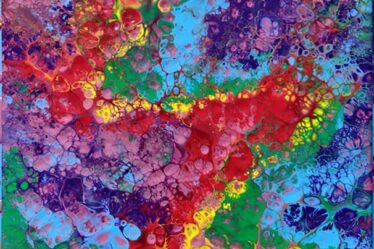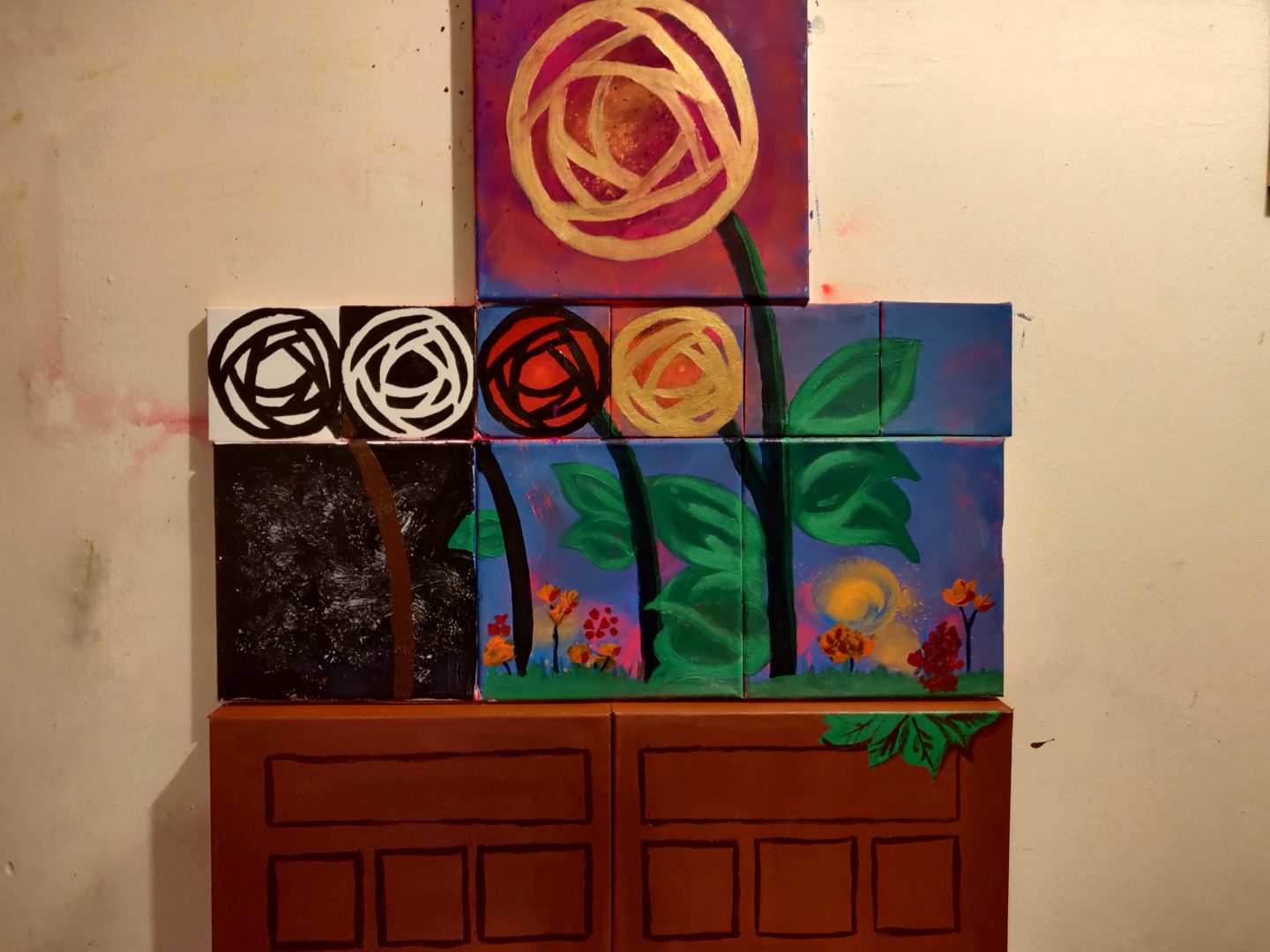
Acrylic on Canvas, 600×750.
This is a “compliation” piece. Intended intially to be 5 separate works, I combined them into one larger painting. Each rose represents a stage on the journey through Mental Health / Abuse. The commonality is “grief”, an appropriate theme for today’s painting.
Artist’s interpretation
I initially envisaged a series of themed Roses, mirroring the processes involved in trauma and grief. Whether you apply the terms used in the “Kübler-Ross model” (The five stages of Grief; Denial, Anger, Bargaining, Depression, Acceptance) or your own (Isolation/Neglect, Depression/Denial, Anger/Emotional Reversal, Acceptance/Recovery, Survivorship), the end goal is the same – being able to move on from Mental Trauma.
I personally read the panel in 5 stages.
On the left third, we have Mental Trauma.
The Black Rose on White Background represents isolation and the beginnings of trauma. The White Rose on Black Background represents depression. The dark panel below represents the emptiness which occcurs when the Mental Trauma begins. Everything seems dark, with little light.
The stem of the “Trauma” Rose is Brown, representing an attempt to hide in the darkness; Shying away from the light – hoping that if you’re not noticed the trauma might not find you. The stem of the “Depression” Rose is black, and crosses into the middle-third. This represents the death felt by the traumatised individual. Unlike the “Trauma” Rose, the “Depression” Rose has a small amount of foliage which is wilting slightly. This represents growing awareness of what is going wrong. It straddles the “Mental Trauma” panel, to represent the feeling of being unable to seek help. Shining a little brighter in the hope of someone noticing that something isn’t right and saving you from the dark. The “Depression” rose is viewing the “Trauma” rose, and can see nothing else. The trauma becomes a consuming focus point, diverting the mind away from the feeling of losing control.
On the central third, we have Recovery.
In the recovery phase, things look a little brighter. We see more colour, and the introduction of budding plants and a brighter horizon. We have growth, and new beginnings.
To me, the third rose represents “Anger”. You’ve developed a fight, sometimes directed outwardly (escaping through the top of the rose), but mostly directed inwardly. This is burning strong in the core of the rose. The stem has turned a healthy colour, and we see strong leaves beginning to sprout, standing strong and facing down the “Depression” rose. It is not a healthy coping mechanism, and it can be quite addictive. It is easier to fight people off, than risk opening up to be hurt all over again. More personally, this also represents misplaced or inappropriate guilt (sometimes called Survivors guilt).
The fourth rose represents “Recovery” and the “Survivor”. It can see the other three roses, but it can also see the new beginnings forming below the “Anger” rose. It has strong, healthy leaves. The stem is linked with that of the largest rose, signifying the ongoing nature of recovery. You can never be fully healed from Mental Trauma, but you can move on. Both of these roses are Gold, further representing the symbiotic nature of these two roses.
The third section is the topmost Rose. This rose represents the “Guiding Survivor”. This rose has grown strong, but this may not be a permanent state. Sometimes it will revert to its “Recovery” phase, and draw on the support of peers. When it has recovered enough, it returns to it’s “Guiding” state, helping the other roses on their journey.
The fourth section is the third right hand side of the piece. This represents “Growth” and “The Future”. Flowers are now in bloom, and there are more new beginnings as we move along the panel. We see abundant growth of foliage, spilling out over the sides of the Window box. The lack of a rose in this third of the piece represents the unknown nature of the future. There are gaps that we can hope to fill, and more growth to come.
Finally, we have the “Window Box” itself. It represents the brain and overall mental state. If we don’t tend to the window box, the roses are never going to improve. It’s where we store everything, but sometimes we put things in boxes and dread to look inside of them every again. During the depressive stage, the box is dark, closed off and conveys a “nothing to see here” attitude. Towards the end, the box has clearly been opened, and slowly things start to spill out. Recovering from trauma, especially ones held so secretively for years or even decades, is a long process. The journey starts with oneself. It seems impossible to begin with, but with patience and effort change does happen.
So here we are, 9 days and 9 to 14 pieces depending on how you count them, and I’ve not really introduced myself. Hi. I’m the Glasgow Unicorn, and I am a survivor. I started painting again after a 14 year break to aid the recovery of my Mental Health. I like to think I flit between the “Recovery” and “Guiding” rose states, but I am also good at kidding myself. In reality, I still flit between “Recovery”, “Guiding”, and “Guilt”. I was a Lost Unicorn in many ways. Finally starting to accept help and support from those who love and care for me has kickstarted a change. I’d be nothing without those very special people, nor without the supporting guidance from my Survivors family. I struggle to say it personally, but to all of you – you keep me going, and I love you all.
Glasgow Unicorn, 14/3/2021.
“Abuse happens in isolation, Healing happens in community.”
Duncan Craig OBE,
Chief Executive Officer & Trauma Therapist – Survivors Manchester
Glasgow Unicorn would be grateful if you showed your support for Survivors Manchester, by making a donation through their website to help them support their growing community. If you don’t have a dedication of your own, please say the Unicorn sent you – if only to make some awesome people – who do the work you wouldn’t want – have a cheeky chuckle to lighten their day. You can also find them on Amazon Smile if you’d like to donate a little bit every time you shop.
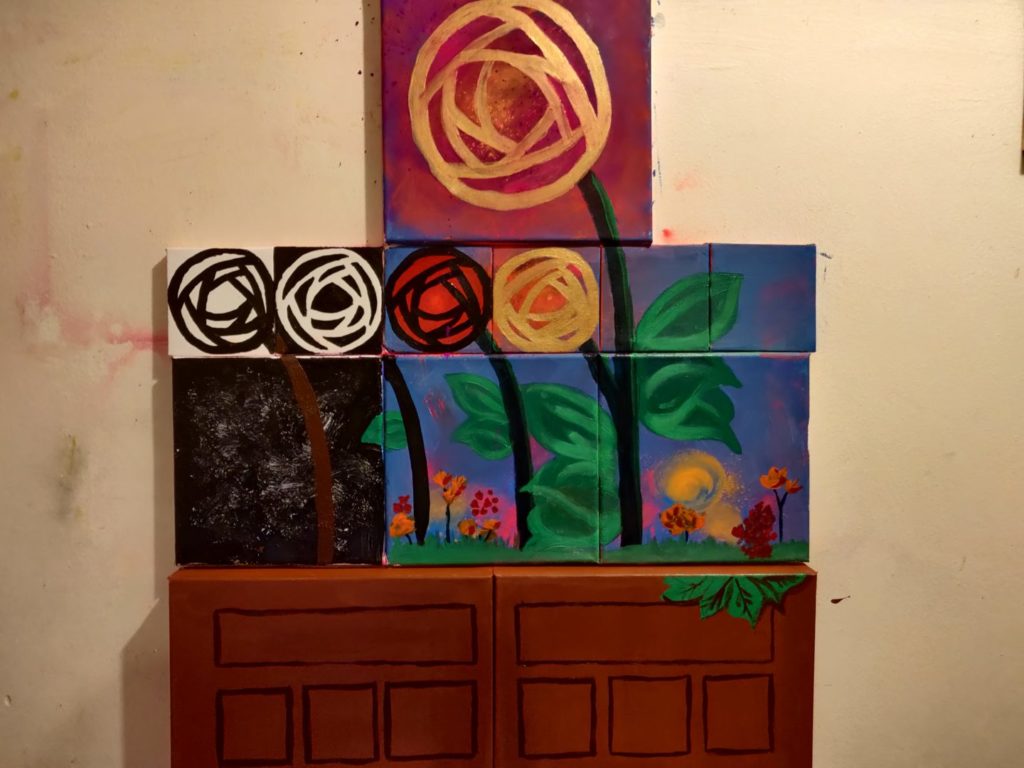
Almost complete. Ceiling light only. 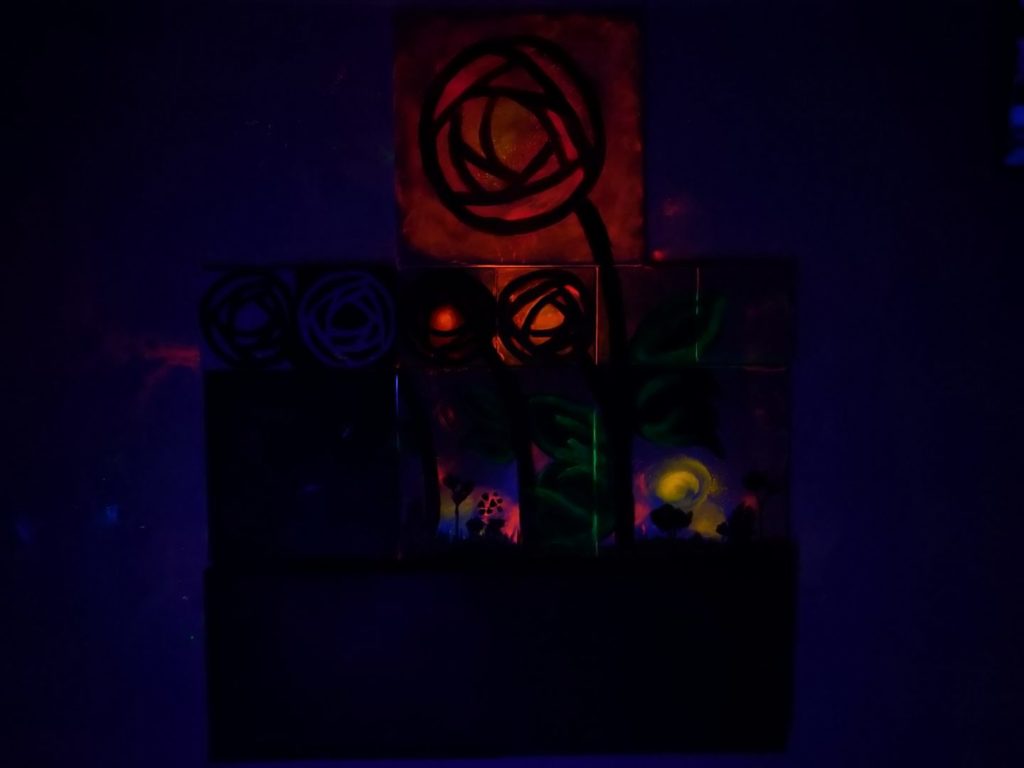
Almost complete. UV only. 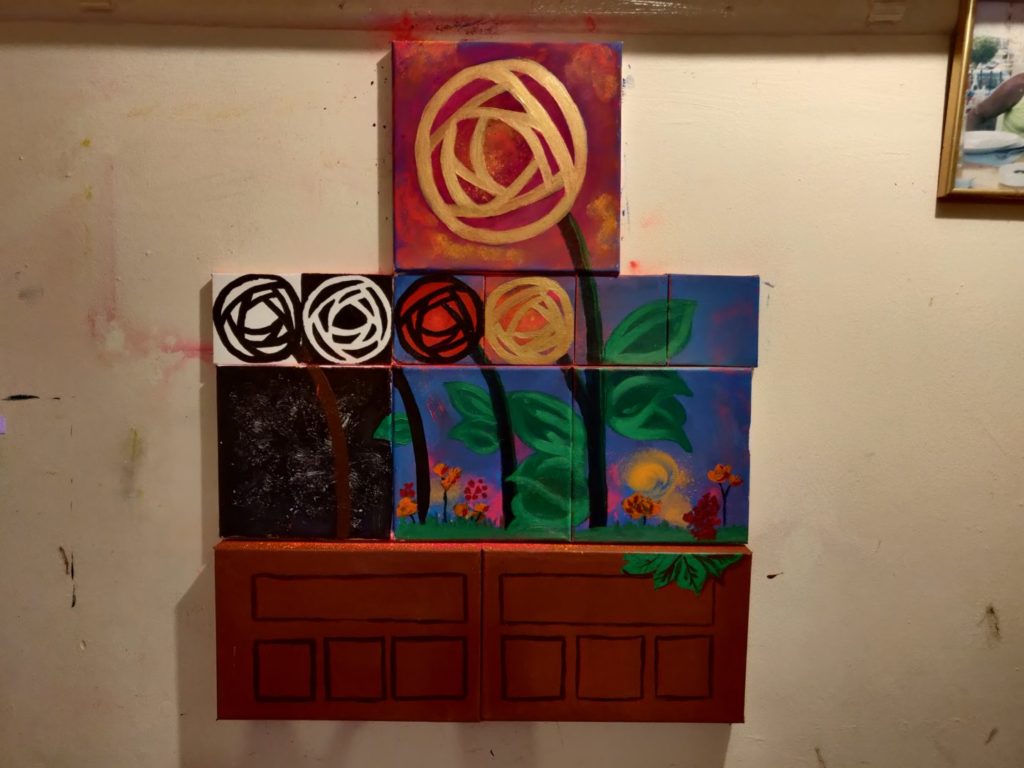
Complete. Ceiling light only. 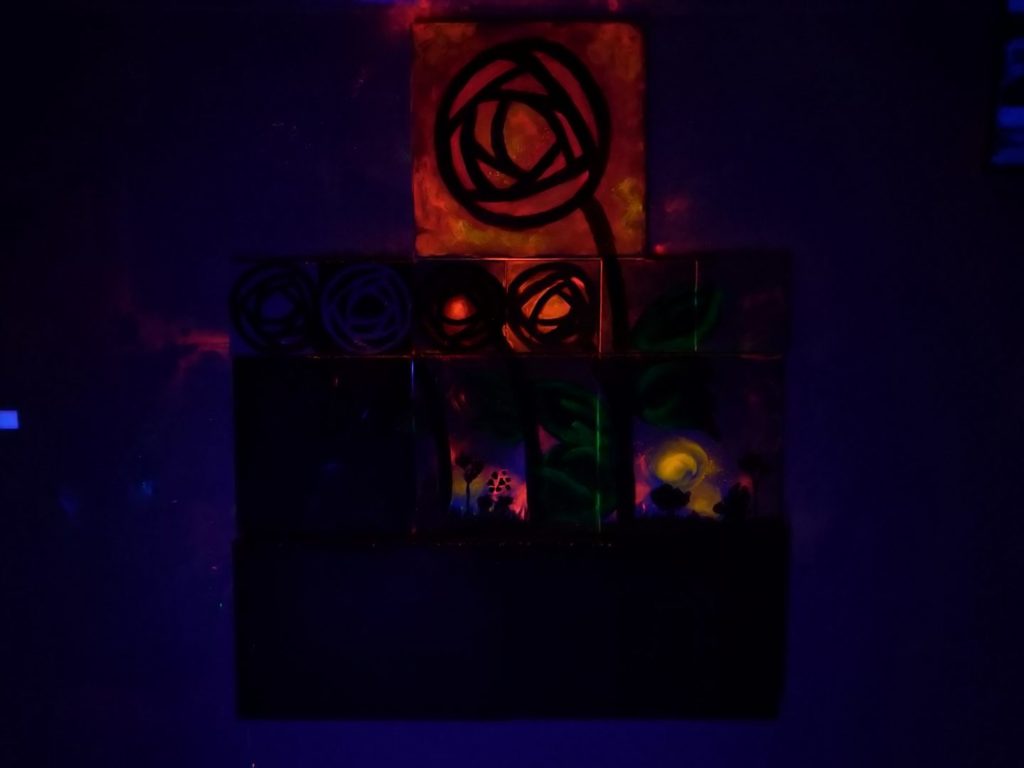
Almost complete. UV only. 
Complete. UV Only. 
Blank canvases, ready for prep.



